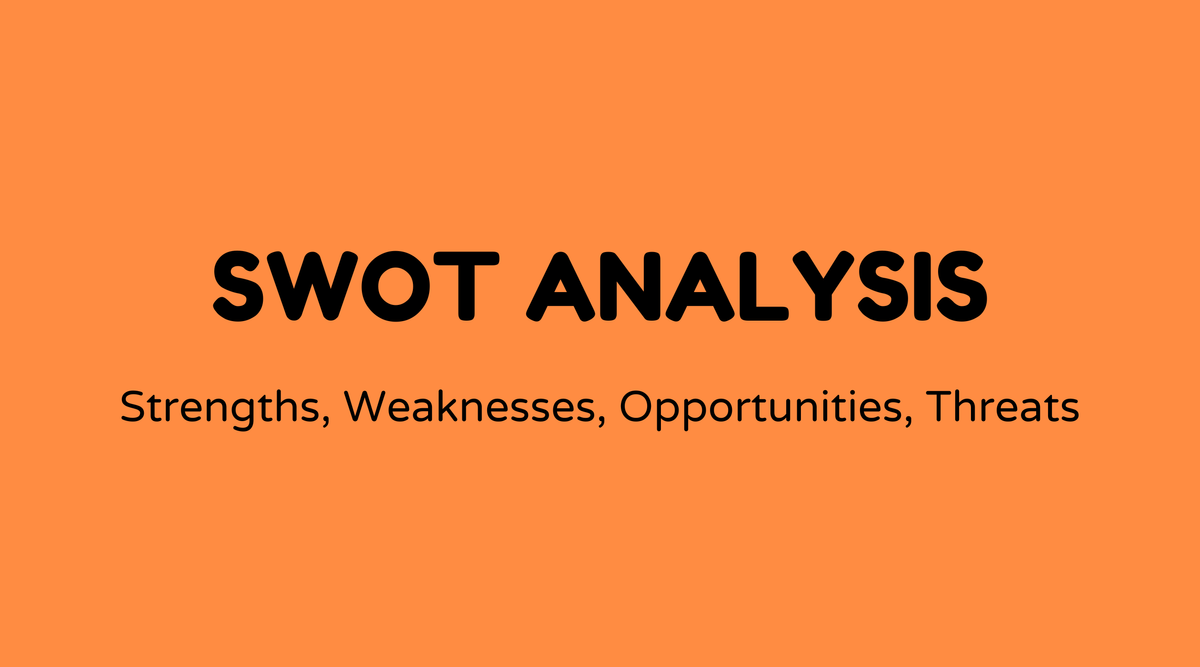SWOT Analysis

Overview of SWOT Analysis:
Understanding your business's internal and external environments is critical. That's where SWOT analysis plays a role. Part of strategic planning, SWOT represents Strengths, Weaknesses, Opportunities, and Threats. This framework helps businesses identify key factors influencing their growth and decision-making. With SWOT analysis, organizations can devise strategies that utilize strengths, address weaknesses, take advantage of opportunities, and safeguard against threats.
Why SWOT Analysis Matters:
Ever wonder why some businesses always seem a step ahead? Often, it's due to effective strategic planning tools like SWOT analysis. This method assists businesses in evaluating internal and external factors that impact their success. This assessment promotes informed decision-making, enhancing competitive advantage while reducing risks. By examining strengths, weaknesses, opportunities, and threats, businesses can adapt to market shifts. It’s not just about understanding your current position; it’s about discovering your future direction.
What is SWOT Analysis:
At its foundation, SWOT analysis is a strategic planning tool. It stands out among business frameworks thanks to its straightforward yet comprehensive approach. Here's a breakdown:
- Strengths: Internal attributes that provide your business with an advantage over competitors. This could involve brand reputation or a skilled workforce.
- Weaknesses: Internal factors that limit your business's growth. These might include constrained resources or outdated technology.
- Opportunities: External chances to enhance performance or achieve goals. For instance, emerging market trends or technological innovations.
- Threats: External challenges that could pose problems. Competitor activities or regulatory changes fit into this category.
Create a balanced view to navigate your strategic path effectively!
How to Conduct SWOT Analysis:
Executing SWOT analysis includes several essential steps:
- Data Collection: Collect information on both internal operations and external environments. Engage stakeholders through surveys and brainstorming sessions.
- Identify Strengths and Weaknesses: List internal factors that support or hinder your business operations. Consider resources, processes, and products.
- Spot Opportunities and Threats: Analyze external elements such as market trends, competition, and regulations to identify potential opportunities and threats. Tools like PESTLE (Political, Economic, Social, Technological, Legal, Environmental) can help reveal these.
- Prioritize the Factors: Rank these elements by importance. Concentrate on those with the greatest influence.
- Develop Strategies: Use insights from SWOT analysis to formulate strategies that utilize strengths, address weaknesses, seize opportunities, and mitigate threats.
Below is an example table displaying SWOT elements:
| Strengths | Weaknesses | Opportunities | Threats |
|---|---|---|---|
| Brand reputation | Limited resources | Emerging markets | Regulatory changes |
| Skilled workforce | Outdated technology | Technological advancements | Competitor activity |
Examples of SWOT Analysis:
To place SWOT analysis in context, let’s look at some real-world examples:
-
Starbucks:
- Strengths: Strong brand image, extensive global presence.
- Weaknesses: High prices compared to local cafes.
- Opportunities: Expansion into emerging markets, digital commerce trends.
- Threats: Economic downturns, competitive pressure from local coffee shops.
-
Apple:
- Strengths: Innovative products, strong financial performance.
- Weaknesses: High-priced products.
- Opportunities: Growth of tech wearables, expansion into developing markets.
- Threats: Intense competition, fast-paced technological changes.
These examples illustrate how SWOT analysis guides companies to align their strategies with their business objectives.
FAQs
What’s the main purpose of a SWOT analysis?
A SWOT analysis aims to identify an organization's internal strengths and weaknesses, as well as external opportunities and threats, to assist in strategic planning.
How often should businesses conduct SWOT analyses?
This varies, but generally, businesses should carry out SWOT analyses annually or whenever substantial changes occur internally or in the industry.
Can small businesses benefit from SWOT analysis?
Certainly! SWOT analysis is beneficial for businesses of all sizes, aiding in strategic decision-making and identifying growth avenues.
Is SWOT analysis time-consuming?
The time needed can vary based on business size and data complexity; however, the insights gained are invaluable for strategy planning.
What tools can assist in conducting a SWOT analysis?
Tools like SWOT analysis software, project management software (e.g., Trello, Asana), and even simple spreadsheets can help organize and facilitate SWOT analysis.
How does SWOT analysis differ from PESTLE analysis?
SWOT analysis focuses on internal and external factors specific to the business itself, while PESTLE analysis examines the external macro-environmental factors impacting the business.



